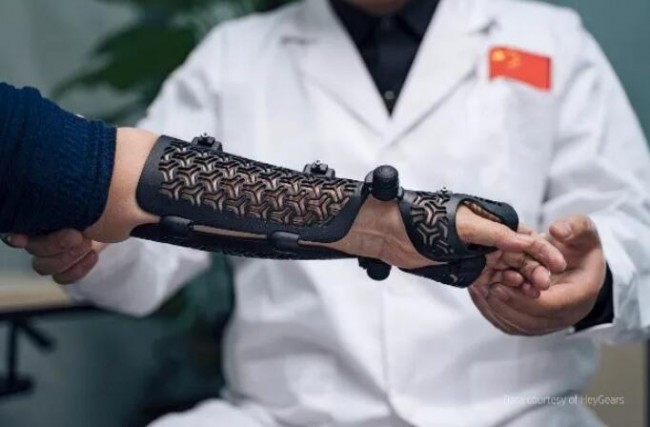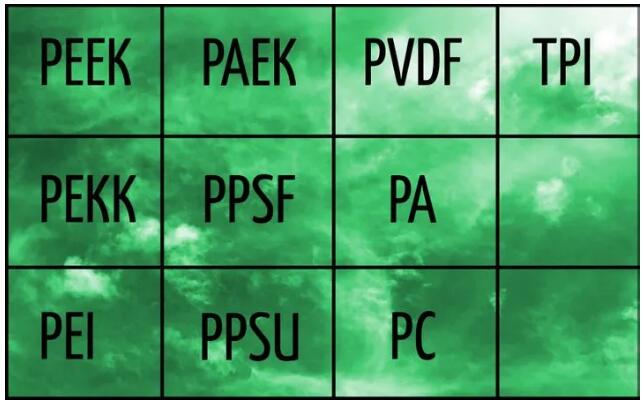Over the past 2-3 years, high temperatures3D printingThere has been astonishing growth, and over the years, most thermoplastics3D printingLimited to a very small percentage of thermoplastics, mainly PLA and ABS, and some PETG.This is still the case for most benchtop equipment, but a number of industrial grades that can handle materials at higher temperatures have been developed in recent years.3D printingEquipment So what are these high temperature plastic materials? What are their characteristics?how to3D printinguse them?
![]() Interplay with the application of metal
Interplay with the application of metal
High temperature materials are useful because they can be used in more environments. Consider a plastic part in a car engine: if exposed to high enough temperatures, it can soften or even melt. However, if it is made of a material with higher heat resistance, it can be a friendly solution to reducing the weight of the car. Plastic parts are generally lighter than metal parts, which is advantageous in many ways, especially in the automotive and aerospace industries.Therefore, people are concerned about these high temperatures3D printingParts are very keen.
Usually open benchtop3D printingmachine is not enough3D printingHigh temperature materials, as the required heat must be enclosed and precisely controlled.According to 3D Science Valley’s market research, there are a number of high-temperature materials focused on the market.3D printingMachine manufacturers, including Roboze, INTAMSYS, Minifactory, etc. Some original manufacturers such as Stratasys, EOS also offer high temperature thermoplastic material printing capabilities,HP,voxeljet-Voxeljetetc. provide the high speed of nylon3D printingFeatures.
l PEEK
The polymer, chemically named “polyetheretherketone,” is actually part of the PAEK family, apparently invented by Victrex in the UK in the 1980s.It has great durability and thus becomes the most popular high temperature3D printingone of the materials and is therefore often used in high stress applications.
Polyetheretherketone (PEEK) has the following properties
High temperature resistance: PEEK has high glass transition temperature (Tg=143°C) and melting point (Tm=334°C), its thermal deformation temperature under load is as high as 316°C, the long-term use temperature is 260°C, and the instantaneous use temperature can reach 300°C. °C.
Self-lubrication: PEEK has good sliding properties and is suitable for occasions where low friction coefficient and wear resistance are strictly required, especially PEEK modified with carbon fiber, graphite and PTFE has excellent wear resistance.
Corrosion resistance: Except for concentrated sulfuric acid, PEEK is insoluble in any solvent and has high chemical stability.
Flame retardancy: PEEK is self-extinguishing, even without any flame retardant, it can reach the 94V-0 level of the UL standard.
Ease of processing: Because PEEK has the characteristics of good high temperature fluidity and high thermal decomposition temperature, various processing methods can be used, such as injection molding, extrusion molding, compression molding and melt spinning.
Mechanical properties: PEEK has good toughness and rigidity, and it has excellent fatigue resistance comparable to alloy materials.
Electrical properties: PEEK has high volume resistivity and surface resistivity, and can withstand AC potential field strengths of various frequencies under a wide temperature range and environmental changes, maintaining good insulation properties.
Hydrolysis resistance: The resin and its composite materials are not chemically affected by water and high-pressure water vapor, and can maintain good mechanical properties under high temperature and high-pressure steam or water environment.
Weather resistance: With excellent weather resistance, the polymer can be used to manufacture components that require strict working conditions or require frequent sterilization-resistant treatments.
l PEKK
Chemical name “polyetherketoneketone”, this emerging3D printingMaterials are becoming more and more popular. PEKK differs from PEEK not only by their names, but also because they share many properties. However, PEKK can withstand greater compressive forces and tends to have higher heat resistance than PEEK.
l PEI
The chemical name is “Polyetherimide” and it can also be found under SABIC’s trademark “ULTEM”.It is the first high temperature offered by Stratasys3D printingOne of the materials available as a material option for their Fortus equipment. Although less expensive than PEEK, it also has slightly less heat resistance and strength, and PEI is often used in aerospace applications.
l PPSU/PPSF
Chemical name “polyphenylsulfone”. This material has high strength and chemical resistance. Several companies, including Stratasys, offer this material option.
l PAEK
Chemical name “polyaryl ether ketone”.This material is relatively high temperature3D printingA relatively new material in terms of space, but it has extremely high temperature resistance up to 350C and produces less toxins when burned than other high temperature materials. This allows it to be used in applications where human exposure may occur.
l PC
Polycarbonate refers to a class of polymers that have carbonates integrated into their structure. PC is a very popular material because of its excellent durability and high impact and scratch resistance. Therefore, it is often used in consumer products.
lPA
Polyamide is a very common3D printingmaterials, although it may be difficult to prove that they are high temperature materials because some polyamides have a lower glass transition temperature than others on this list. There are several types of PA, usually represented by numbers: PA-6, PA-11, PA-12, PA-66, etc. They are also called “nylon”.
The main varieties of nylon are nylon 6 and nylon 66, which are absolutely dominant, followed by nylon 11, nylon 12, nylon 610, nylon 612, and nylon 1010, nylon 46, nylon 7, nylon 9, nylon 13, new The varieties are nylon 6I, nylon 9T and special nylon MXD6 (barrier resin), etc. There are many modified varieties of nylon, such as reinforced nylon, monomer casting nylon (MC nylon), reaction injection molding (RIM) nylon, aromatic nylon. , transparent nylon, high impact (super tough) nylon, electroplated nylon, conductive nylon, flame retardant nylon, nylon and other polymer blends and alloys, etc., to meet different special requirements, widely used as metal, wood and other traditional materials replacement Supplies, as various structural materials.
To date, according to 3D Science Valley’s market research, the most widely used plastic in selective laser sintering powder bed – SLS process, multi-jet melting – MJF process, high speed sintering – HSS process is polyamide (PA) – nylon.Nylon is stronger and more durable than some other plastics such as ABS, although SLS equipment manufacturers or other3D printingTechnical equipment manufacturers all offer some form of PA, but currently the most basic varieties are PA11 and PA12, although there are of course many types of PA composites, including glass reinforced nylon, carbon fiber reinforced nylon, to provide certain additional properties.
Most PA sintered parts cannot print multiple colors at once, with one exception being inkjet technology (e.g. MJF), which deposits color inks into3D printingcomponents to create vibrant full-color objects.

Haig Technology and HP team up to create highly customized PA 12 materials3D printingThe wrist and hand rehabilitation brace is a representative application of PA12 material.Source: HP
(responsible editor: admin)



0 Comments for “Explore the world of 3D printing high temperature plastics”